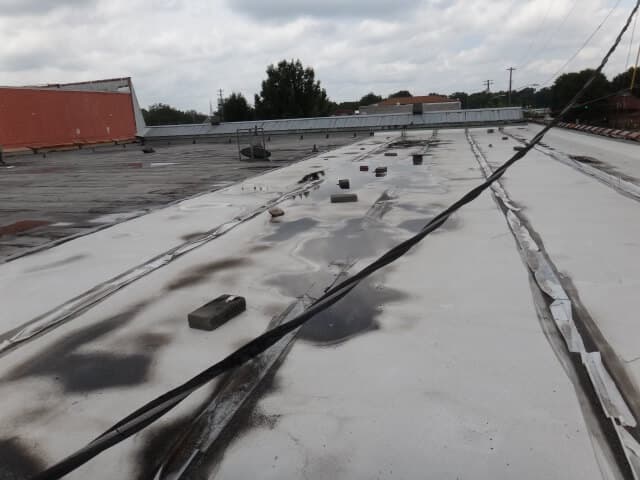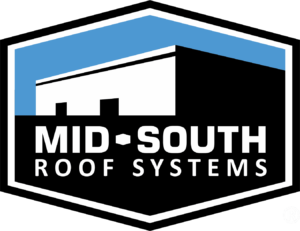Choosing To Re-Roof or Repair: 2 Case Studies Illustrate the Decision-Making Process


When a building owner discovers problems with a roof, it may not be immediately clear if the problem will require minimal repair work or a full-scale replacement. So how to differentiate between the two? Repairs often entail a smaller up-front expenditure, but, depending on the owner’s goals for the building, a full re-roof may provide a more sensible long-term solution. The following two case studies demonstrate how owners and contractors can work together to determine the best course of action.
Case Study #1:
Years of Neglect Make a Re-Roof Difficult
An owner at a manufacturing facility discovered several problems with the multi-layer roof. The 100,000 square-foot building was more than 40 years old, and it was plagued with pervasive leaks, which were damaging the equipment beneath. The roof consisted of three assemblies in three different areas — a built-up roof, a modified-bitumen roof, and metal roof layers.
The built-up section of the roof had been systematically degraded for a long time and was damaged beyond repair. The diagnosis for the modified-bitumen section, however, was not so simple. It could have been fixed, at least temporarily, but those repairs would have been extensive and expensive. The metal roof portion was in fairly good shape — it only required minor repairs to meet a satisfactory standard.
The Verdict: Regular Maintenance Would Have Enabled Capital Budgeting
The investigation revealed two key points:
- The lifespan of all three roof systems could have been extended with a regular maintenance schedule.
- A full replacement for all but the metal roof portion was necessary. Thankfully, the owner had adequate funding to repair the roof, but proactive capital budgeting would have provided more stability.
Case Study #2:
Shoring Up Vulnerable Portions of an Otherwise Healthy Roof
The owners of a 1.2 million square-foot distribution center of specialty equipment were preparing to rent the facility to another business. With a timeline of just one month to fix several minor leaks, the owners wanted a quote on a re-roof.
There were two different roof systems — a seven-year-old section of TPO and a 12-year-old section of ballasted EPDM. An inspection revealed that both roofs had been well maintained, were in good shape and only in need of minor repairs.
The Verdict: Choose a Solution Aligned With Long-Term Goals
Initially, the team suggested making only the necessary repairs to the otherwise pristine roof, and then setting up a comprehensive maintenance plan to protect it in the future. The owner’s long-term priority, however, was to protect the sensitive, mission-critical equipment contained within the building. Based on that, the team decided that the best investment was to re-roof only the portion directly above the equipment to ensure maximum impermeability, and to keep the rest of the roof intact. Finally, the team devised a preventative maintenance program to proactively care for the roof going forward.
When owners and investors are presented with the dilemma of repairing or re-roofing, the best investment decision depends on the condition of the roof and, most importantly, the owner’s priorities and long-term goals. In virtually every case, regular inspections and proactive maintenance can extend a roof’s life and reduce the costs associated with repairs.
LIKE WHAT YOU JUST READ?
Sign up for our newsletter to get fresh articles, updates and more!
What is Thermal Imaging?
It’s a well-known fact that moisture can lead to damage of materials. However, those in the roofing industry can take advantage of technology designed to detect moisture in spots that can’t easily be seen, allowing for damaged areas to be found more quickly and repaired. This technology is called thermal imaging. A thermal imaging camera…
Maintaining Commercial Roof Drainage Systems
Most homeowners know that gutters and downspouts are the drainage system for their home’s roof. A gutter/downspout system is standard on most residences. Commercial roofs, however, employ a variety of methods to drain the water from the roof surface. Commercial roof drainage systems are usually one of three main types. Here’s a rundown of those…


